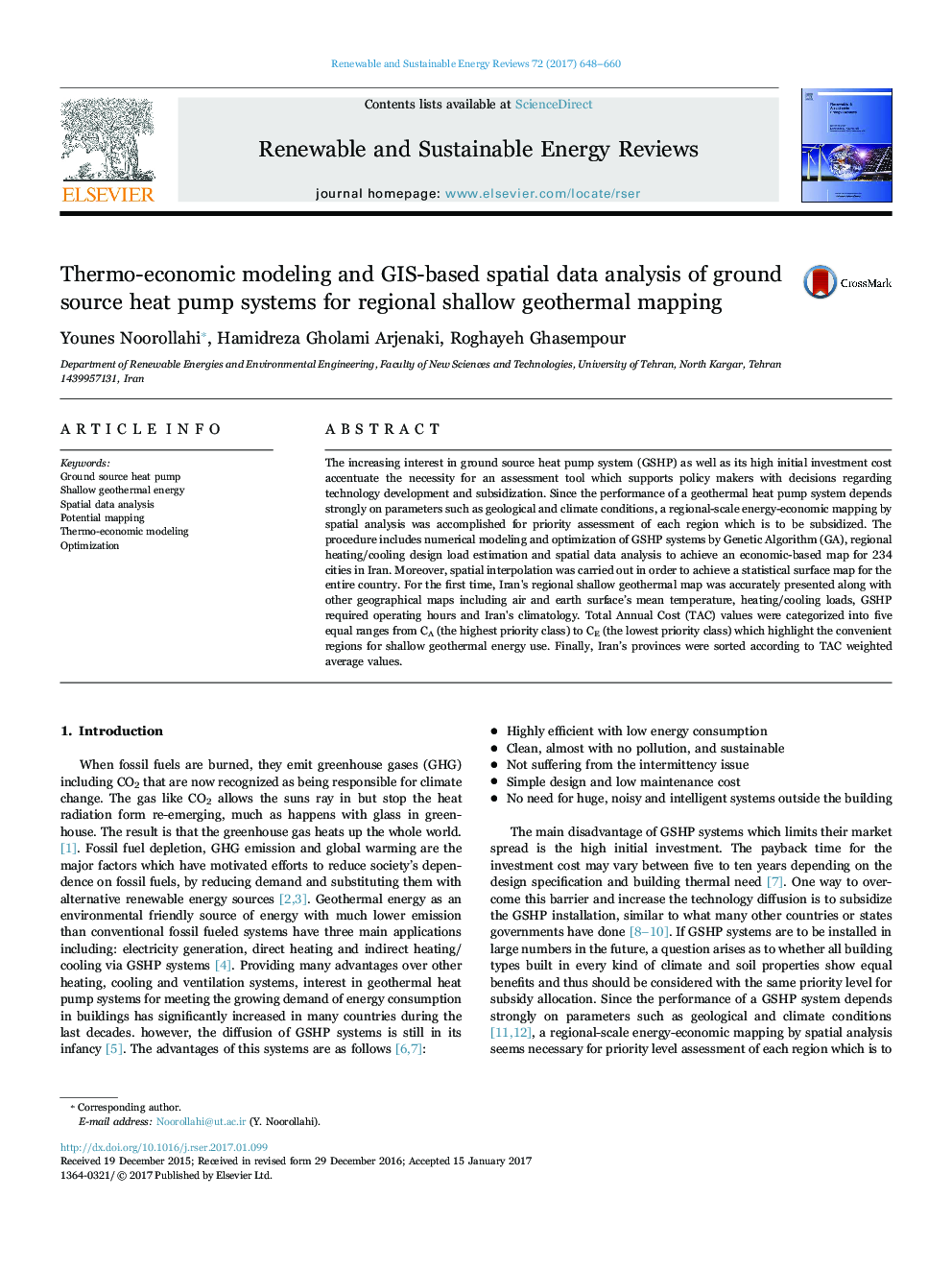| Article ID | Journal | Published Year | Pages | File Type |
|---|---|---|---|---|
| 5482395 | Renewable and Sustainable Energy Reviews | 2017 | 13 Pages |
Abstract
The increasing interest in ground source heat pump system (GSHP) as well as its high initial investment cost accentuate the necessity for an assessment tool which supports policy makers with decisions regarding technology development and subsidization. Since the performance of a geothermal heat pump system depends strongly on parameters such as geological and climate conditions, a regional-scale energy-economic mapping by spatial analysis was accomplished for priority assessment of each region which is to be subsidized. The procedure includes numerical modeling and optimization of GSHP systems by Genetic Algorithm (GA), regional heating/cooling design load estimation and spatial data analysis to achieve an economic-based map for 234 cities in Iran. Moreover, spatial interpolation was carried out in order to achieve a statistical surface map for the entire country. For the first time, Iran's regional shallow geothermal map was accurately presented along with other geographical maps including air and earth surface's mean temperature, heating/cooling loads, GSHP required operating hours and Iran's climatology. Total Annual Cost (TAC) values were categorized into five equal ranges from CA (the highest priority class) to CE (the lowest priority class) which highlight the convenient regions for shallow geothermal energy use. Finally, Iran's provinces were sorted according to TAC weighted average values.
Keywords
Related Topics
Physical Sciences and Engineering
Energy
Renewable Energy, Sustainability and the Environment
Authors
Younes Noorollahi, Hamidreza Gholami Arjenaki, Roghayeh Ghasempour,
